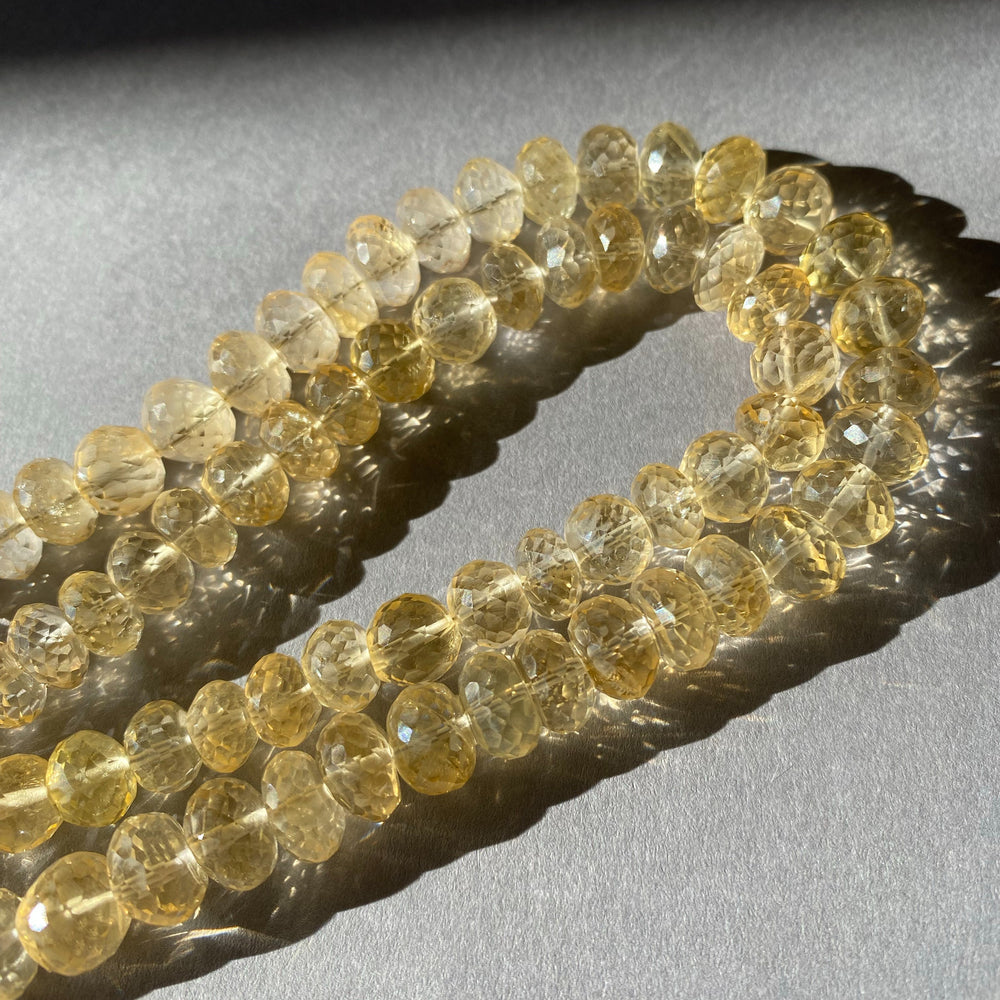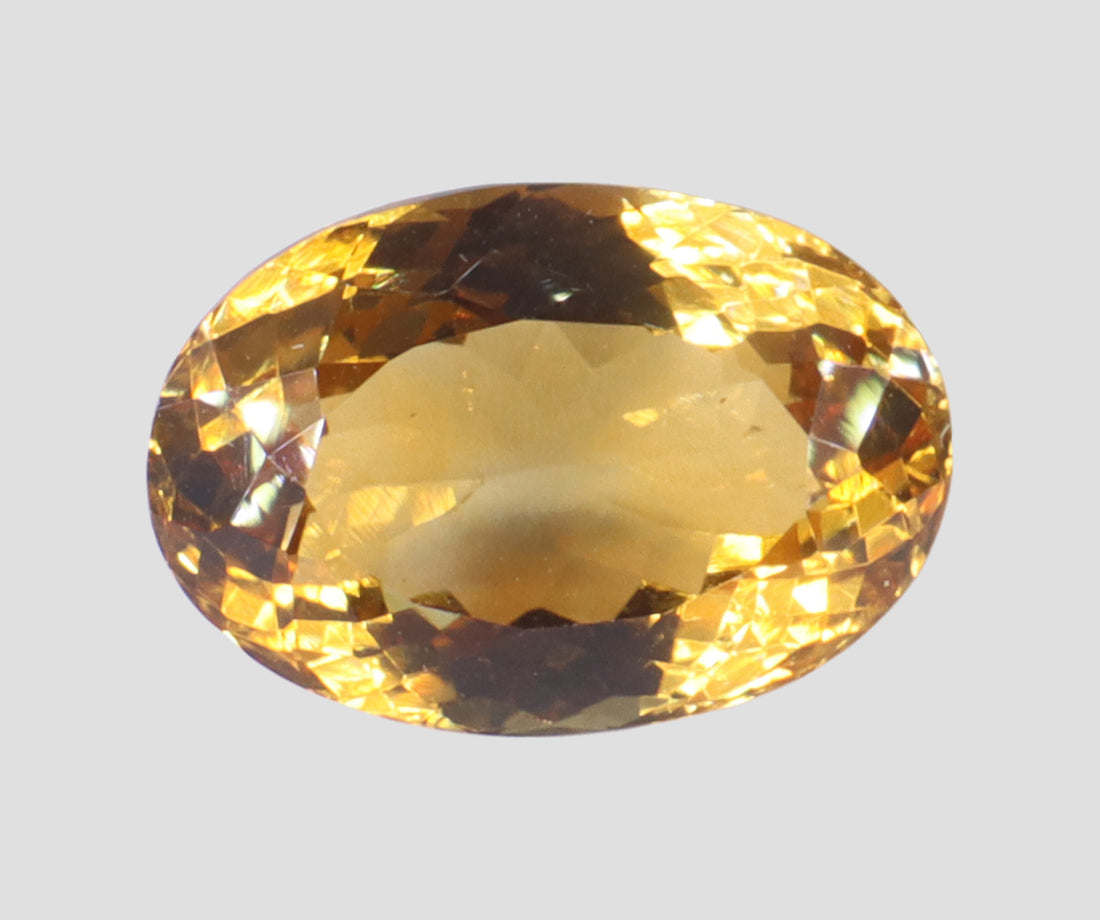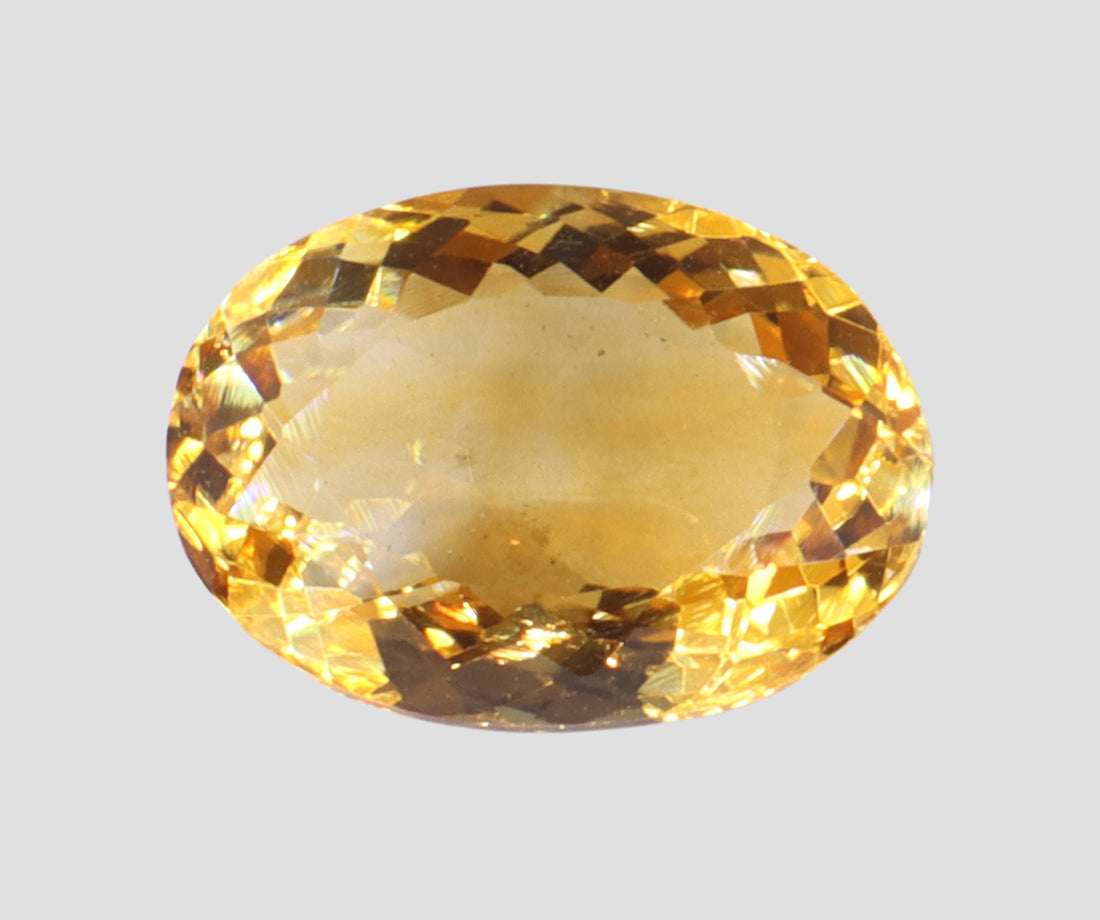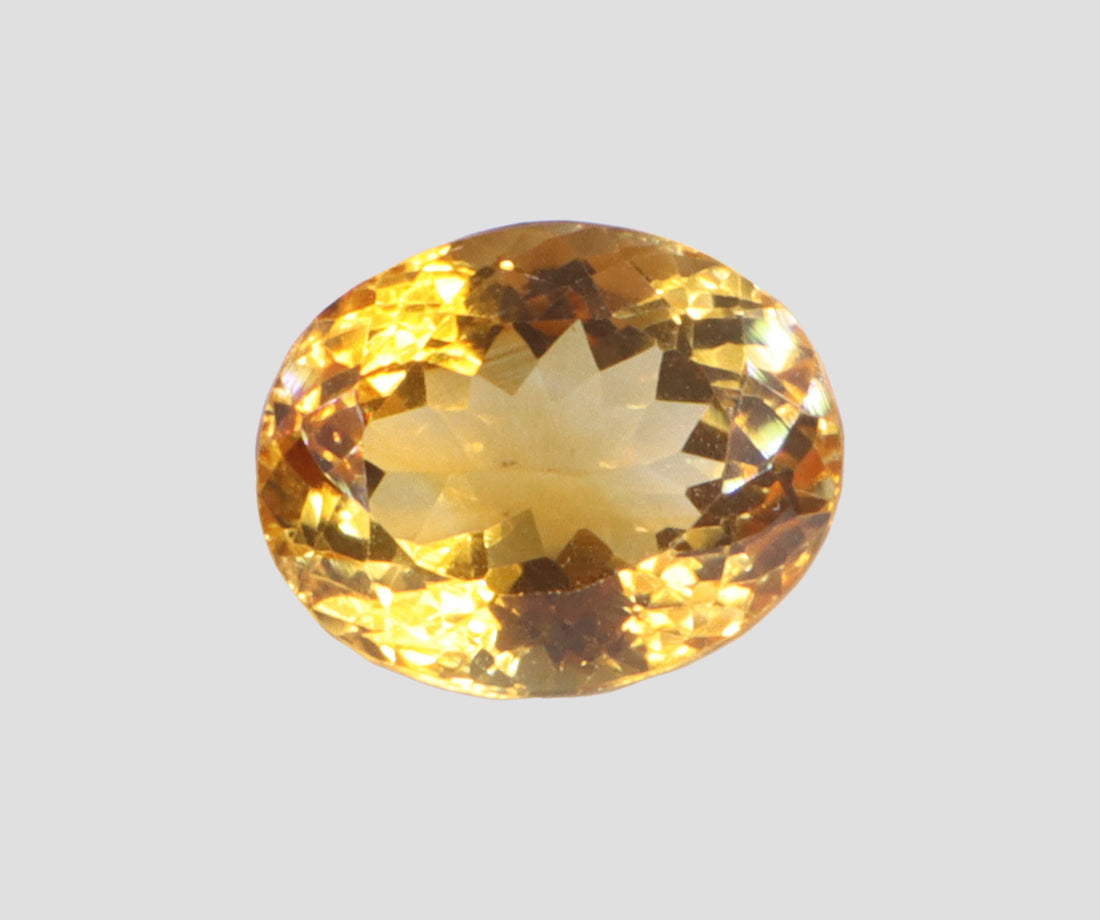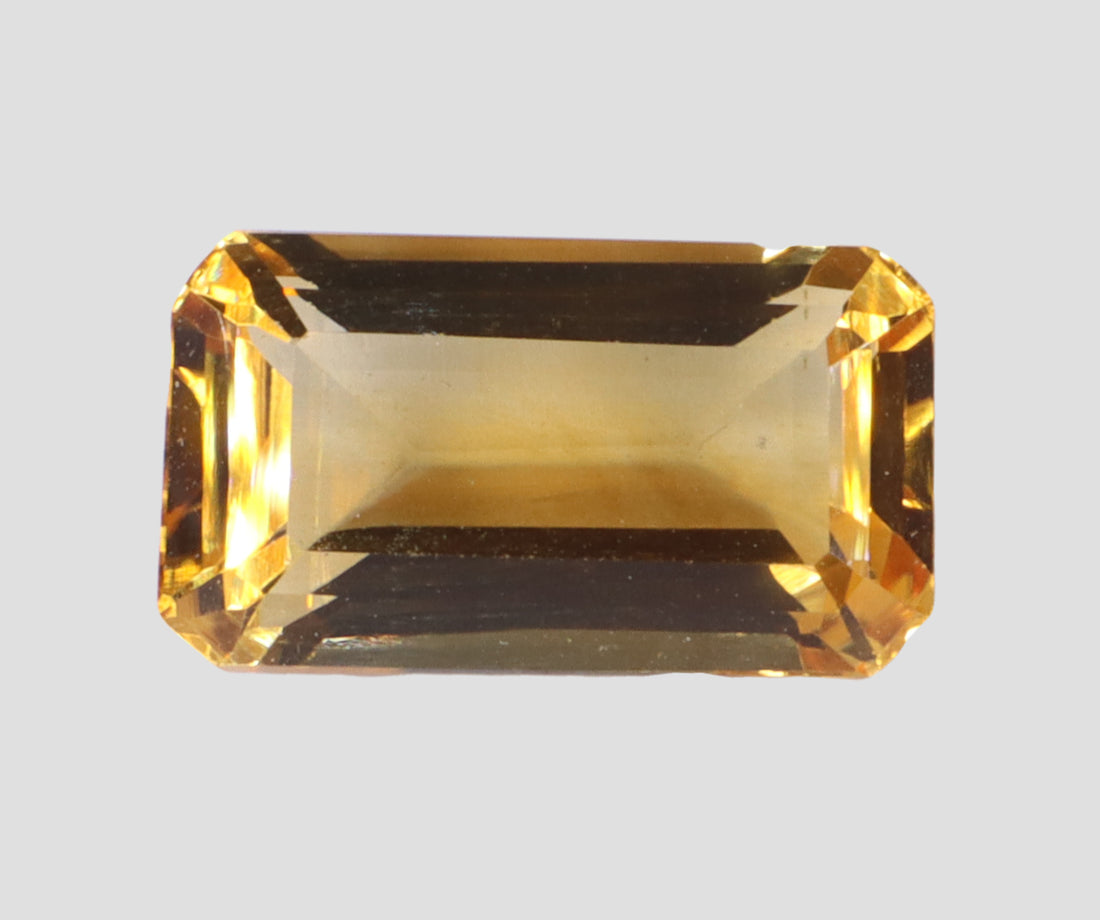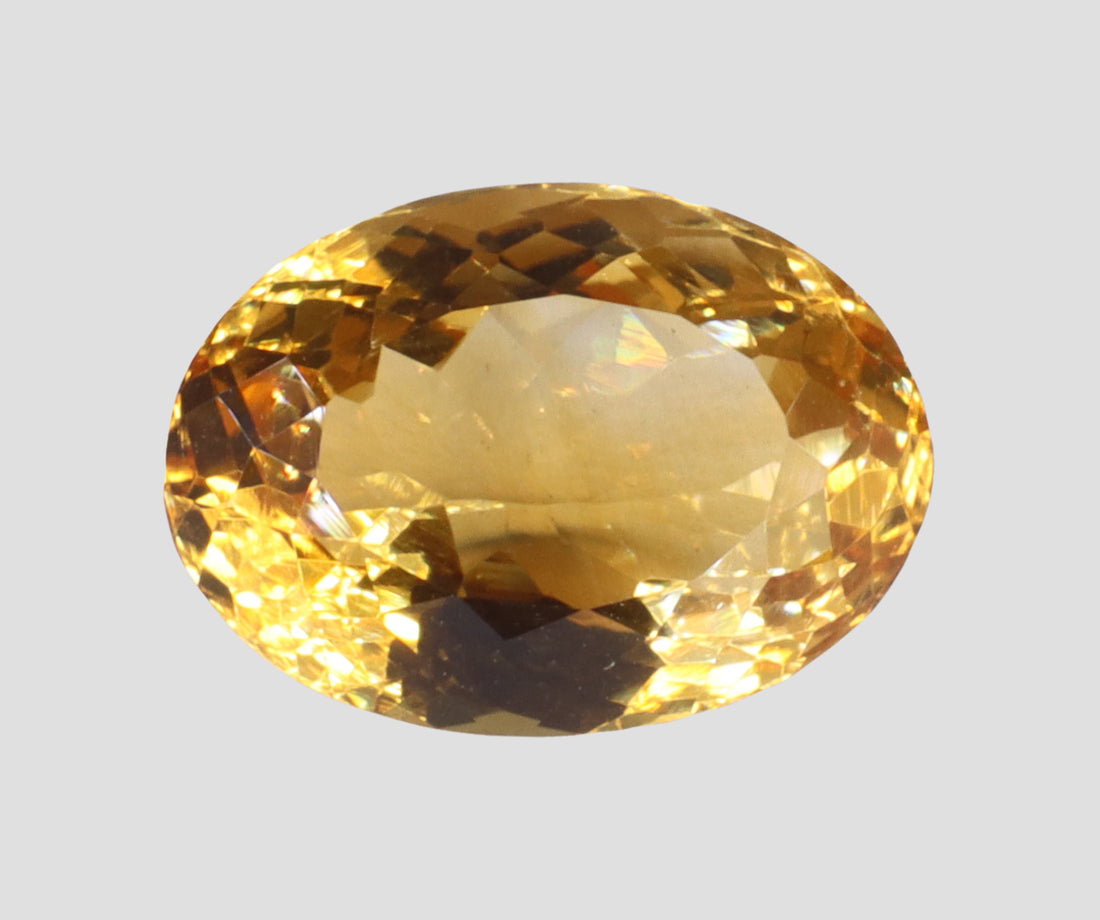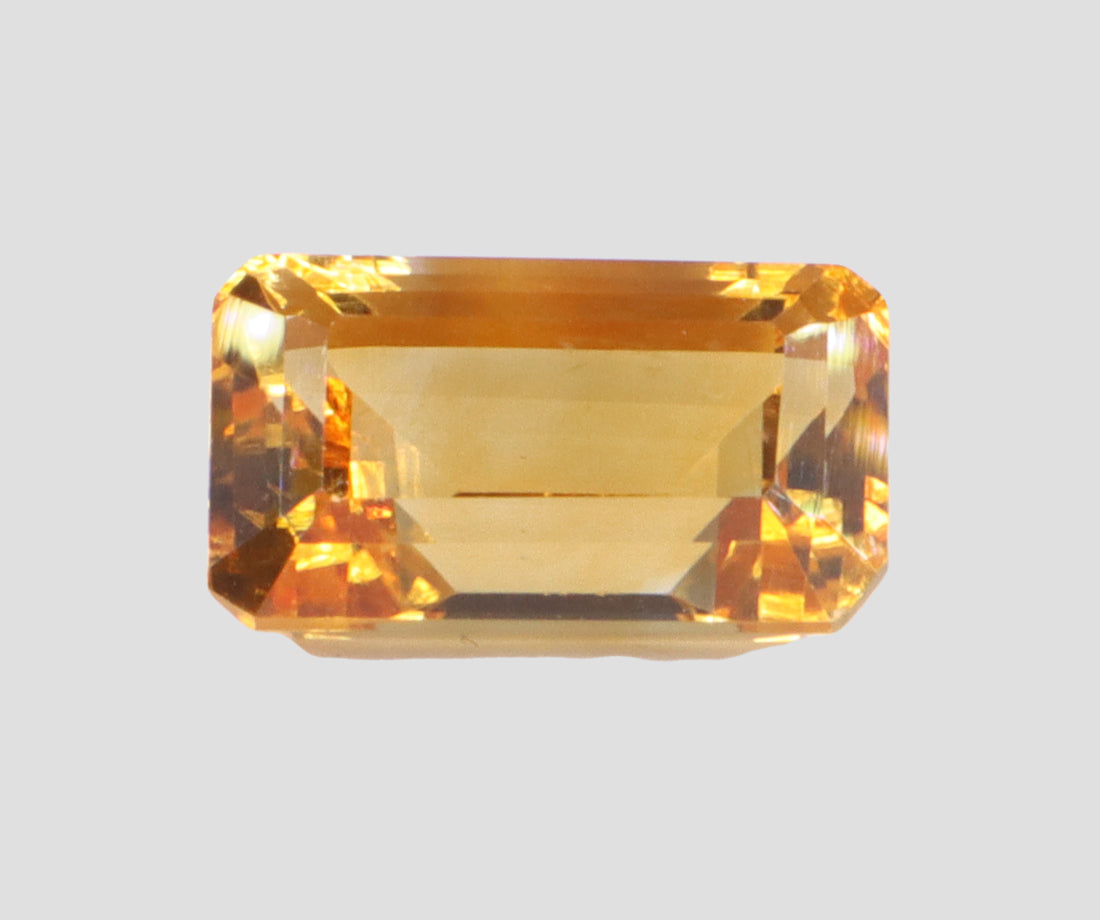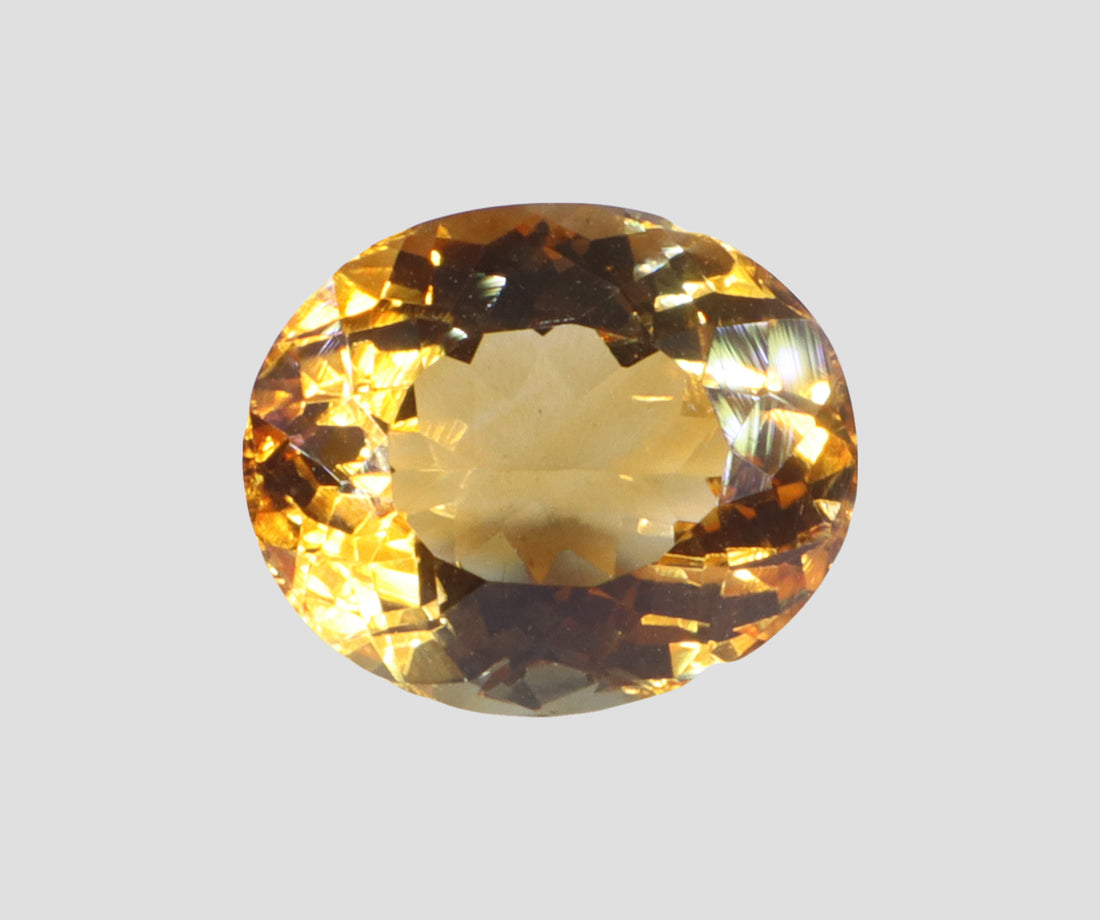This article serves as part of an ongoing series of profiles on the different varieties of precious & semi-precious gemstones. To view the entire list, click here.
Welcome to our comprehensive guide to citrines. These beautiful gemstones, part of the quartz mineral family, are more than just yellow gems. They've become so popular that even celebrities like Emma Watson are often seen wearing earrings made of citrine. Relatively rare in their natural form, they were used historically to decorate the handles of ancient swords and were believed to bring protection and good luck. Today, citrines are known as the birthstone for November, along with topaz. They naturally occur in various locations across the world, including Madagascar, Russia, Africa, Bolivia, and France.
 Emma Watson’s citrine earrings
Emma Watson’s citrine earrings
As is the case with most gemstones – not all citrines are the same. These gemstones occur in different shapes and sizes, and their quality depends on the 4Cs of gemstone quality – namely the cut, clarity, color, and carat. In this guide, we uncover everything you need to know about citrines – including their formation, origins, colour spans, astrological benefits and more.
1. Citrines - Formation & Occurrence
Citrine, which gets its name from the French word for lemon "citron", is a distinctive yellow-to-golden variety of the quartz family of minerals. It is made up of silicon and oxygen atoms arranged in a three-dimensional structure.
They come in various varieties, from cabochon citrine to faceted citrine. The gem’s characteristic coloration is attributed to trace iron impurities within the quartz crystal lattice. This yellow or golden hue can also be induced through various treatments, which are elaborated below.
Citrine can also develop through hydrothermal processes deep within the Earth's crust. They are commonly found within igneous and metamorphic rocks, with granite and gneiss being notable examples. It can also occur in clastic sediments, but the best quality citrine is typically found within mineral veins.
 A rough citrine quartz crystal
A rough citrine quartz crystal
Citrine exhibits notable heat resistance, able to withstand temperatures ranging from 400 to 450 degrees Celsius without melting or decomposing. This gemstone’s rating of 7 on the Mohs scale makes it a durable choice for jewelry. Citrine jewelry, like earrings, engagement rings, or necklaces, is an excellent choice if you're looking for durable pieces that can withstand everyday wear and tear without worry.
2. Where Are Citrines Found?
Citrines were first discovered in the 1600s by a Spanish conqueror in a Bolivian mine, but today are found in various geological settings around the world. Brazil stands out as a prominent source of natural citrine, with significant deposits in Minas Gerais and Rio Grande do Sul. Madagascar is also renowned for producing high-quality citrine. In the United States, citrine can be found in North Carolina and Colorado, and it is also found in limited quantities in Spain.
The Ural Mountains in Russia have a well-established reputation for citrine production. In contrast, Zambia hosts citrine deposits that showcase a broad spectrum of colors, ranging from pale yellow to deep amber. Citrine is also discovered in other countries, often occurring alongside various other varieties of quartz such as amethyst and rose quartz. The availability and quality of citrine may somewhat vary depending on location and geological conditions.
3. The Colour Span of Citrines
Citrine appears in shades ranging from pale yellow to brownish orange and is a relatively uncommon natural find. In times before the advent of modern gemmology, its warm, tawny appearance often led to its confusion with topaz, often referred to as topaz quartz. Notably, it serves as an appealing alternative not just to topaz but also to yellow sapphire or the pukhraj stone. The most coveted citrine shade is a vivid yellow to reddish-orange, devoid of any brownish undertones. These stones also occur in a deep brown/orange shade, commonly known as the Madeira citrine in the trade. In general, the colours of a citrine can range from a light lemon and orange-yellow tone, to a deep orange-brown shade.
 Citrines occur in a range of colours spanning from a lemon-yellow shade, to a deep brown-orange shade
Citrines occur in a range of colours spanning from a lemon-yellow shade, to a deep brown-orange shade
Owing to the rarity of naturally occurring citrine, most citrine gemstones accessible in the market are a result of heat treatment to attain their desired coloration. It is also interesting to note that some amethysts, which is the purple variety of quartz, when subjected to high temperatures, can turn into a yellowish-orange citrine – changing from an unpleasant light violet to a beautiful yellow hue. Of course, the original color of the amethyst itself also plays a significant role in determining the richness of the resulting citrine's yellow hue.
 Subjecting violet amethysts to high temperatures can change their colour to citrine yellows (Source: Reddit)
Subjecting violet amethysts to high temperatures can change their colour to citrine yellows (Source: Reddit)
4. Common Inclusions in a Citrine
Most citrine gemstones exhibit a high degree of clarity and transparency, making them highly valued for their luminous and radiant appearance. They typically have very negligible or no inclusions, but may occasionally contain the following types of inclusions:
- Rainbow Inclusions: Small, reflective inclusions create colorful flashes or prismatic effects when exposed to light. They can add a unique character to the gem.
- Water & Liquid Inclusions: These tiny, bubble-like appearances resemble water droplets trapped within the gem. They can be interesting but might affect the gem's clarity.
- Mineral Inclusions: Citrine can contain small mineral crystals or particles of other minerals like rutile or hematite. They can appear as dark spots or specks within the gem.
- Gas Bubbles: Tiny gas bubbles may be trapped within the gem during its formation. They can be round or elongated and may affect the gem's transparency.
 Rainbow inclusions in a citrine cabochon (Source: Etsy)
Rainbow inclusions in a citrine cabochon (Source: Etsy)
5. Common Treatments & Enhancements of Citrines
Citrine stones can undergo various treatments and enhancements to improve their appearance or color. Some common treatments and enhancements include:
- Heat Treatment/Thermal Enhancement: Heat treatment improves the gem's color by changing amethyst's purple or pale violet hues into the attractive yellow-to-orange shades of citrine. The heat treatment process can produce a range of citrine colors and is widely accepted in the industry as it doesn’t affect the structural integrity of the longevity of the gem.
- Irradiation: Some citrines are exposed to controlled radiation to enhance their color. Irradiation can create deeper and more vibrant yellow-to-orange hues. This treatment is often followed by heat treatment to stabilize the color.
- Coating: Some citrines are exposed to controlled radiation to enhance their color. Irradiation can create deeper and more vibrant yellow-to-orange hues. This treatment is often followed by heat treatment to stabilize the color.
| Mineral | Quartz |
|---|---|
| Colour Span | Lemon & orange-yellow, to reddish-brown orange |
| Popular Origins | Brazil, Madagascar, USA, Spain, Russia, etc. |
| Mohs Hardness | 7.0 (on a scale of 10) |
| Common Treatments | Thermal enhancement, irradiation, & coating |
| Birthstone | November |
Citrines - A Quick Snapshot
6. Evaluating the Quality of a Citrine
Unlike many other colored gemstones, where the origin plays a vital role in determining their value, citrines are distinct in that their origin holds relatively less significance. Citrine gemstones generally exhibit consistent quality characteristics, regardless of where they come from, thus somewhat reducing the importance of their geographic origin. In general, the 4Cs of gemstone quality can be leveraged to evaluate the quality of a citrine:
- Colour: The gemstone's color is the most critical factor in determining the quality. High-quality citrine should exhibit a rich, pure yellow to orange-yellow hue. The color should be bright and lively, without brown or grey overtones. The Madeira citrine, which is a deep orange-brown shade, is also highly coveted for jewelry adornments.
- Clarity & Inclusions: Clarity refers to the presence of inclusions or flaws within the citrine. High-quality citrine is typically eye-clean, meaning it has minimal to no visible flaws when viewed with the naked eye.
- Carat weight: Citrines are generally occur in larger gem-quality specimens relative to sapphires, emeralds, and other precious stones. A size of 10-15 carats is considered standard, and larger citrines are rarer and can be more valuable.
- Cut: The cut of a citrine gemstone affects its overall appearance and sparkle. Well-cut citrines should have excellent symmetry, good proportions, and well-defined facets. The cut should enhance the stone's natural color, and should reflect back to the eye as brilliance.
To determine the overall quality of a citrine, it is important to work with a reputable jeweller or gemmologist who can assess the gemstone's characteristics and provide an expert opinion.
7. How Much Do Citrines Cost?
You can often find citrine stone at the source at a lower price, typically ranging from $5 to $20 per carat. This is because citrines are more abundant compared to gemstones like sapphires and emeralds, which are rarer in nature.
However, prices tend to be higher in countries like the US or UK, where Citrine is imported and sold through various retailers. Notably, Madeira Citrine, with its distinct reddish-orange to brownish-red hue, commands the highest price among the various colors of this gemstone, with prices typically ranging from $20 to $200 per carat.
8. Citrines in Astrology
Citrine, associated with the planet Jupiter, is believed to bring good fortune and prosperity to its wearer. Historically, it has also been thought to provide protection against snake venom and ward off evil thoughts. In Vedic Astrology, citrine is recommended for individuals born under the Sagittarius sign. However, individuals with Pisces, Aries, Cancer, Leo, and Scorpio ascendants may also wear the gemstone after consulting with an astrologer. This gemstone, along with topaz, serves as an important but affordable substitute for yellow sapphires.
 Citrines in Astrology
Citrines in Astrology
To maximize the benefits of citrine, you can wear a citrine ring on the index finger of the right hand. It is best worn in gold or silver metal on a Thursday, in the morning between 5 - 7 AM during the Shukla Paksha lunar phase. In general, the citrine stone is believed to bestow the following astrological benefits to its wearer:
- Positive Energy: Citrine is believed to dispel negativity and infuse positive energy into your life. This belief in its ability to dispel negativity and bring positivity makes it an appealing choice for jewellery, including engagement rings and bracelets.
- Success & Prosperity: Known as the Money Stone or the Merchant's Stone, citrine is associated with wealth, good luck, and success.
- Financial Management: Keeping citrine in a wallet is believed to help control spending and promote generosity and wealth-sharing.
- Happiness & Married Life: This gem is said to promote happiness, bless with parenthood, and support a happy married life. Pregnant women often wear it for the protection and good health of their babies.
- Professional Benefits: For professionals in fields like merchant banking, marketing, sports, fitness, casinos, and media, citrine is believed to enhance thought processes and creativity.
If you’re looking to buy citrine stone online, we invite you to browse through our curated assortment of these stones. With our lifetime returns & exchange policy, and free lab certificates of authenticity, you can rest assured of a genuine purchase at the Precious Earth store.

